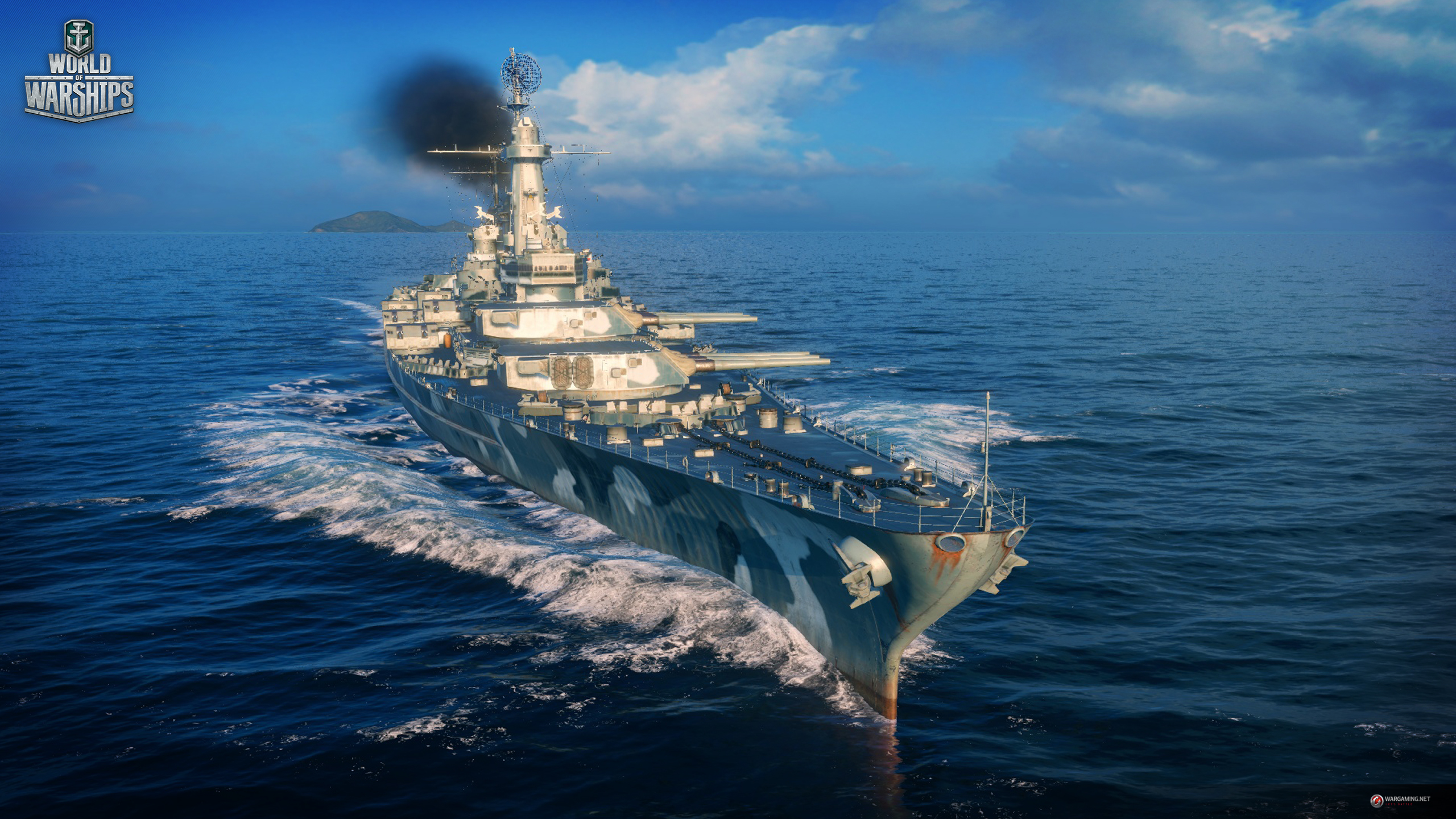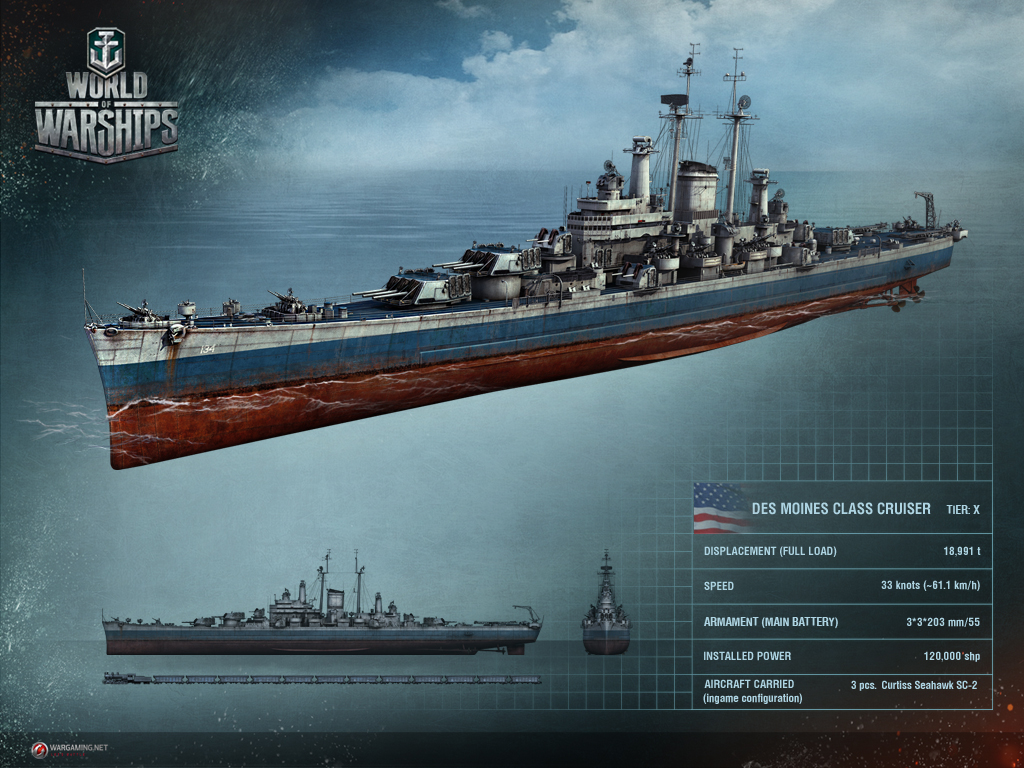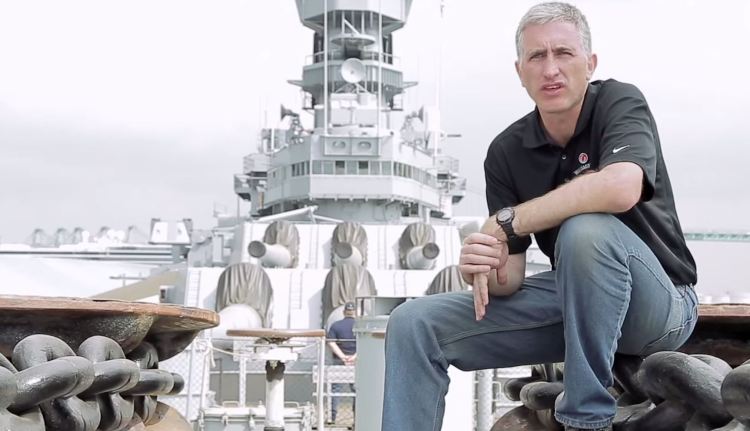Even if these are copies, he buzzed at being so close to some epic pieces of naval history: “I spent days just ecstatic, piecing together ship blueprints.” And he drank in the sense of history.
“Particularly with the prints for Tirpitz. The illustrations of the interior were so detailed — you could see individual bunks and faucets. It’s an inside no one will see again.”
Moran explains how Wargaming goes about finding plans — and where they find alternatives should they find the official sources lacking the information they need. Turns out this is something many amateur historians can do as well.
“It all depends on how hard or willing you are to look for them,” he said. “The first place is the national archives. The navy section of the national archives are very good, indeed. I remember looking for microfilm and thinking, ‘I could give them to an industrial plant, make these, and could build a South Dakota ship.’ The big problem is finding the records that are useful — I don’t care about the bilge.”
Moran and his crew found another, surprising source for plans — model kit makers. “There’s a cottage industry of people who have copied blueprints for making models,” he said. He throws out an example of someone with photocopies of plans in West Virginia — “If it’s copies of the original material, who cares? Lots of digging around in places you wouldn’t check.”
Another source Moran cites is Amazon — a book of Japanese warships he snagged for $300. “I hand-carried it to St. Petersburg. The head of art was going, ‘It’s the holy grail!’
“Info is easy to find if willing to find, man hours, money to find it — which we’re happy to say we are.”
Some plans are harder to come by than others. While the Russian archives are relatively good, Moran said, they have some issues with some blueprints winding up in private hands than in a central state repository. Classic Russian paranoia plays a role, too — “It doesn’t matter if it’s a 100-year-old tank, it’s still a state secret,” Moran said. But he notes that over the last couple of years, the Russians have begun to open up.
When it comes to Japan, Moran said that Wargaming has a Japanese “chieftain” to help there, an editor of a naval magazine. Japan shares something in common with Eastern Europe, too, Moran notes — when it comes to the information in books on military equipment, the U.S. is CNN to Eastern Europe and Japan’s “60 Minutes” — “Japanese books on tanks and naval history go to insane levels of detail,” Moran said.
As a historian, Muncaster finds awe in how people built such a massive ship — and how each part fits into the greater whole.
“The interior spaces, the laundry rooms, the fuel tanks — how it all comes together — it’s this great, huge machine where you have all these little things going together — hard to process with ships — it feels like touring a building,” he said. “What a wonderfully complicated machine.
“You look at it and know what it had to look like. You can almost see people going through the hallways, see people in their bunks — it’s pretty amazing.”

Above: The USS Montana — America’s answer to the Yamato.
While Muncaster had a number of revelations about warships while studying the German plans, and he enjoyed learning about all the vessels he worked on, the researcher did have a favorite ship — and it turns out it’s one that existed only as a design on paper: the Montana class of super-battleships, America’s answer to Japan’s Yamato. It’s a ship that would’ve been so large that it wouldn’t have fit through the Panama Canal, a spec that had limited the designs of every past U.S. warship.
“The research for the Montana class was fantastic,” he said, noting it’s like someone “looked at the Iowa [class] and said we could [put] more armor on it.”
And if they were going to give this new battlewagon extra armor, might as well give it an additional turret — giving it four batteries of 16-inch guns.
He explains how battleship armor design works: “They take the biggest, baddest shell in service and block it.” When the Iowa was being designed, the 2,070 pound shell entered service, and the Iowa wasn’t going to stop that. So the theory was that we needed one that could stop it, and that was one of the origins of the Montana.”
And the ship, in theory, had the protection to stop a 500-pound armor-piercing bomb dropped from as high as 30,000 feet. “From an engineering standpoint, that’s amazing,” he said. “it’s almost humorous — dropping bombs from planes from 30,000 feet, they’re not going to hit a ship, not in the 1940s.”
Gaming history
The two historians understand that history must sometimes make way for gameplay. One of these concessions is gun ranges — they’re far shorter in World of Warships than they should be.
“I certainly understand feeling weird, but there is the limitation of map size. This becomes apparent in higher-tier gameplay,” Muncaster said. “If you have 23,000 kilometer range, it’s the entire map.”
And the battles aren’t historic, either — something that comes with aiming for balanced teams in terms of ship tiers, players, and fleet compositions. But this doesn’t bother the chief historian.
“It’s very easy to deal with. In every real-world battle … if you’re fighting fair, you’re doing something wrong,” Moran said. “For games, you have to have a reasonable chance of either side winning.”

Above: The Des Moines is one of the most powerful heavy cruisers in World of Warships.
He offers an example with a battle he’d like to see replicated — Savo Island, a sorta prelude to the Battle of Guadalcanal. The Japanese routed a force of U.S. heavy cruisers and destroyers with a near-equal squadron of their own. “Actually, I have a strong suspicion on how we’d be able to replicate a battle. In order to make it fun, some ship characteristics would have to be modified to be fun. The Des Moines — it’s a revolutionary [heavy] cruiser, would ROFL-stomp everything floating [in that battle]. Yet make it equal to other top-tier cruisers to make it equal in the game.”
It’s fitting that Moran would bring up the Des Moines — he said it’s his favorite ship, and he digs admiring it in 3D. “You can’t play in 3D, but models are supported in 3D. Looking at the Des Moines cruiser, how it’s festooned with 20mm and 40mm [antiaircraft guns] — I’m not going to look at a 3D model the same way again.”
It’s one of the surviving ships Wargaming has visited. “It’s just a beautiful cruiser to look at,” Moran said.
Only a small slice of the battleships, cruisers, destroyers, and carriers in World of Warships remain afloat, but for those that either sit on the bottom of the ocean — or were scrapped long ago — the work of historians like Moran and Muncaster enable Wargaming’s players to still appreciate these lost, majestic rulers of the sea.
VentureBeat's mission is to be a digital town square for technical decision-makers to gain knowledge about transformative enterprise technology and transact. Learn More

